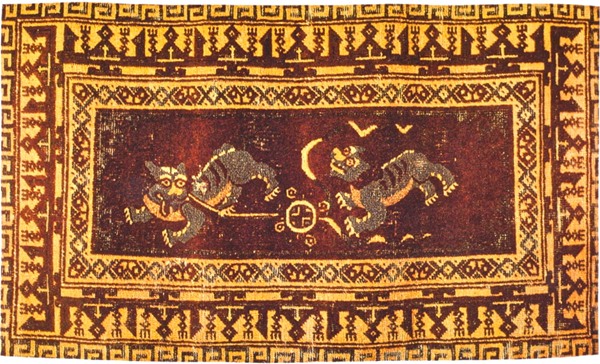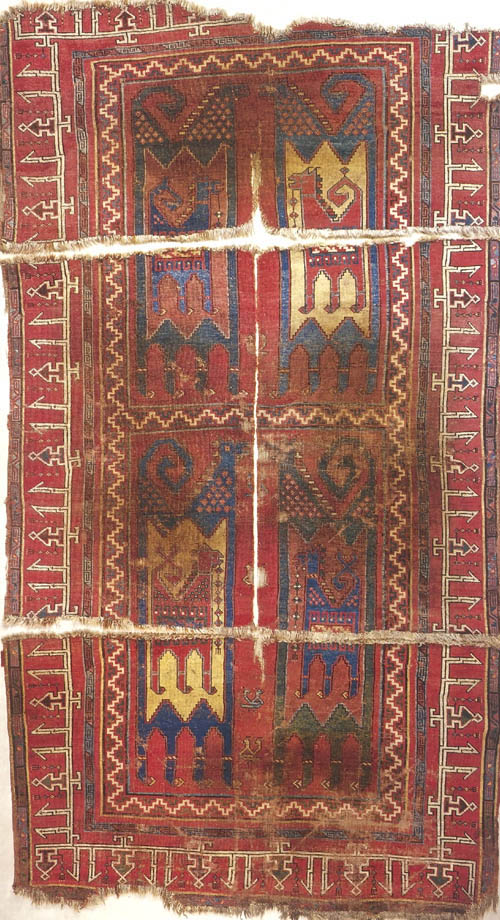Hi Jeff,
You are right, the migration of the "dragon and phoenix" motif to central Asia, Iran and Azerbaijan might even have happened, by way of the Silk road, long before the Mongol onslaught. Besides, the frontiers of the Chinese Empire, times and again, included parts of Transoxiana. Another point in favor of your suggestion is the Chinese influence already visible in Great Seldjuk miniatures, several generations before Genghis Khan.
Could the vehicles of dragon and phoenix motifs have been China-made
rugs? I doubt it, because of the lack of proper Han rug-weaving traditions. The inhabitants of the Tarim basin (of Khotan for example) could have made more credible go-betweens, including the old Turanians and the Uyghur Turks:
They have been ruggies for ages, their weavings had a high reputation (1) and they have been many times tributary of the Chinese empire. It is well documented that they supplied Chinese elite with rugs, although this never was an important import item for the Han.
It is therefore not unlikely that they have been weaving rugs with traditional Chinese motifs too, to satisfy their occasional eastern customer (As they were still doing during the eighteenth and nineteenth centuries). "Chinese-looking" pattern might have also completed their traditional rug motifs, because Buddhism was the Tarim basin's religion until the tenth century.
Rugs like the one in FIG.1 (Fifteenth century? Origin unknown but the Tarim basin would be a logical source), which shows two typical Chinese «shishi» and a kufic border quite similar to the one in the (seldjuk?) «animal rug» in FIG 26 of the main essay.
FIG. 1 Khotan ? Fifteenth century? GLEN (Kyoto Mus.)

FIG 26 Turkish, thirteenth or fourteenth century. H. Kircheim. Orient Stars.
 (1) Hans Bidder "Carpets from Eastern Turkestan". Mr Bidder even qualifies the Tarim basin as "the oldest home of pile carpet known to us today" . Page 11.
(1) Hans Bidder "Carpets from Eastern Turkestan". Mr Bidder even qualifies the Tarim basin as "the oldest home of pile carpet known to us today" . Page 11.